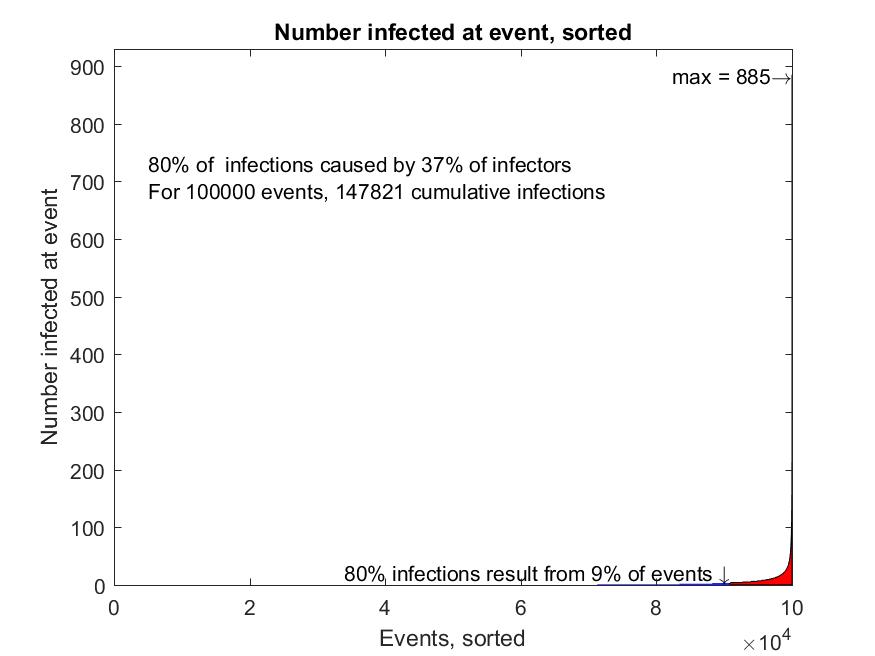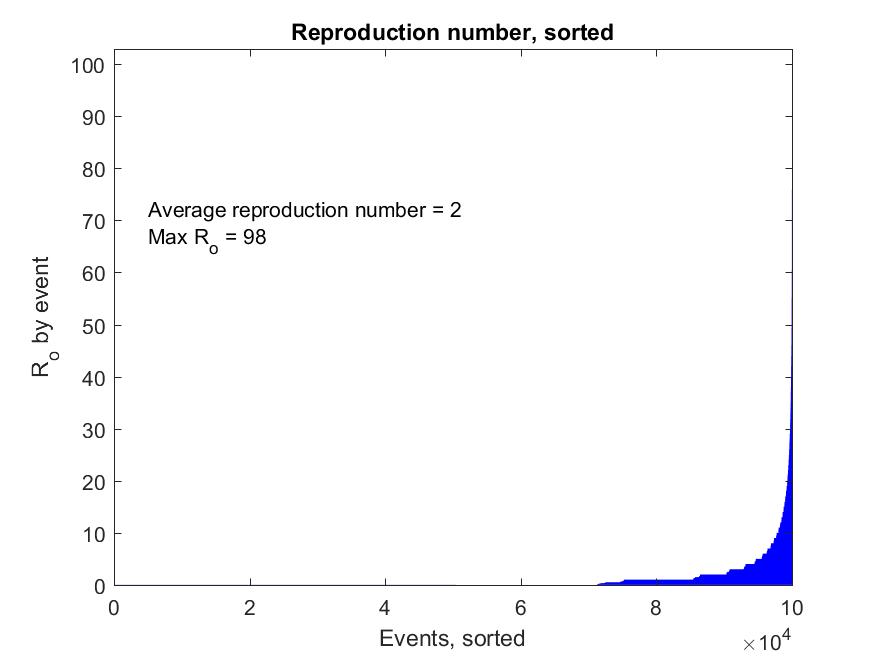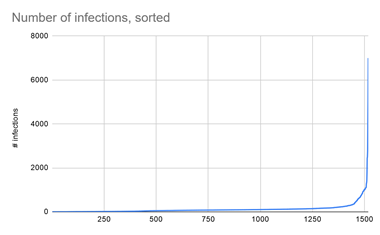1/Since early in the pandemic it was apparent that superspreader events were more likely to occur during indoor gatherings. We also know that the pattern of infection is highly “dispersed”: most infections are caused by a small number of infected people.
2/ Did you know that this behavior could be explained mostly by aerosol transfer of the virus? Infection by aerosol spread indoors is generally modeled using Well-Riley equations, which are the basis of several calculators found online. @jljcolorado @ShellyMBoulder @linseymarr
3/ The models provide an estimate of the probability that a person attending a specific event will become infected by aerosol transmission. #gid=785137656">https://docs.google.com/spreadsheets/d/16K1OQkLD4BjgBdO8ePj6ytf-RpPMlJ6aXFg3PrIQBbQ/edit #gid=785137656">https://docs.google.com/spreadshe...
4/ To simulate infections on a larger scale, I randomized input variables for this basic model to generate many “events” where infection may, or may not, occur. Input variables include size of venue, number of attendees, air exchange rates, time, etc.
5/ The results can be organized in multiple ways, but here are a few of the most revealing.
6/ Shown here is a plot of the number of infections that occurred as a result of 100,000 simulated events (from 10-20,000 people).
7/ As shown, these are sorted from fewest to most. You can see how extremely skewed this is; most infections occur during a fraction of the events. For most events, nobody becomes infected.
8/These super-spreader events, no surprise, occur where there are larger gatherings with poor ventilation that occur for a longish time.
9/The reproduction number, Ro, on average for these simulations is about 2. But note how skewed this is: the reproduction number is >10 for about 5% of events.
10/ What is fascinating is how well the aerosol-transmission model reflects, qualitatively and semi-quantitatively, what has been observed.
11/Compare the first figure above with this figure, generated using this database ( https://covid19settings.blogspot.com/p/about.html )">https://covid19settings.blogspot.com/p/about.h... of reported super spreader events. Note that this figure only reflects reported spreading events, without accounting for the many gatherings without infections.
12/Caveats: I believe the models reflect a reality of spreading events but recognize that they do not simulate them precisely. They do not account for other modes of transmission; the model is likely incomplete (all are) and input distributions can always be improved.
13/It is also true that many types of models can generate similarly skewed distributions when subjected to Monte-Carlo type analysis. I welcome your thoughts, science twitter!

 Read on Twitter
Read on Twitter




